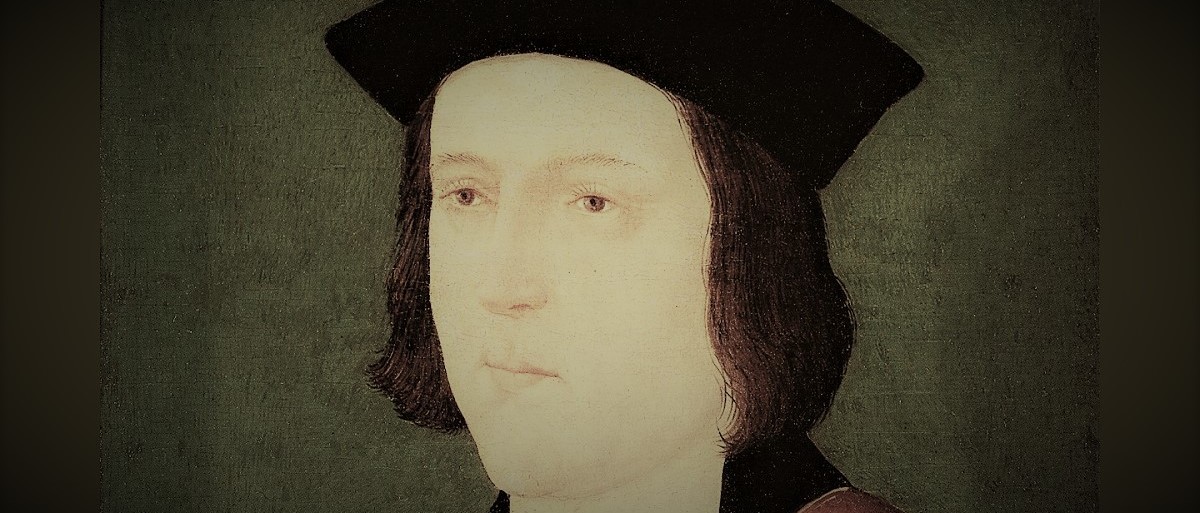Edward IV
Posted on 4th January 2021
Edward, Earl of March was born on 28 April 1442 in Rouen, France. His father was Richard, 3rd Duke of York and Cecily Neville. He would become the first Yorkist King of England.
Edwards father Richard held a strong claim to the English throne which led to the Wars of the Roses, between the Houses of York and Lancaster, wars that would dominate Edwards life.
Richard, Duke of York had previously held power in England as Lord Protector when King Henry VI was suffering from mental illness. With Henry’s recovery in 1454, Richard was removed as Lord Protector, however he still held claim to the throne and he would fight for it.
At the Battle of Northampton on 10 July 1460, Henry VI was captured and in October of the same year Henry changed the right of succession to the throne of England to Richard, and his heirs. Edward was now in line behind his father to inherit the throne. Henry had disinherited his own son.
Richard, Duke of York died alongside his young son Edmund, Earl of Rutland at the Battle of Wakefield on 30 December 1460. It was now up to his elder son Edward, Earl of March to fight for the crown.
Edward supported by the prominent Richard Neville, Earl of Warwick entered London in March 1461 and was crowned King. Henry VI was now imprisoned, with his wife Margaret of Anjou taking up the Lancastrian cause.
Reign 1461 - 1483
Around 1464 Edward secretly married Elizabeth Woodville, a marriage that would produce ten children. When the marriage became public, it angered Richard, Earl of Warwick who had been a staunch supporter of Edward. Warwick did not like the power that the Woodville family held over Edward.
Warwick joined forces with George, Duke of Clarence, fighting against Edward at the Battle of Edgecote Moor on 26 July 1469. The rebels defeated Edward and imprisoned him.
Edward’s forces counter-attacked at the Battle of Losecoat Field on 12 March 1470, leading to Edward’s release. Warwick and Clarence now fled to France, where they allied themselves with the Lancastrian forces of Margaret of Anjou, ready to battle again.
Warwick agreed with Margaret of Anjou to restore the Lancastrian King Henry VI to the throne of England. His brother John Neville, Marquess of Montagu also defected to the Lancastrian side, leaving Edward no choice but to flee to Flanders for his own safety.
Henry VI was briefly restored to the English throne in 1470, but Edward would return to regain his throne. This led to the Battle of Barnet on 14 April 1471, a Yorkist victory for Edward and the deaths of Warwick and Montagu.
Margaret of Anjou had fought long and hard to regain the throne for her husband Henry VI, which would in turn secure the throne for her son Edward, Prince of Wales, which was her priority.
The Lancastrian and Yorkist forces met again at the Battle of Tewkesbury on 4 May 1471, a further Yorkist victory. Edward, Prince of Wales was executed. The only opposition to Edward IV was now Henry VI, currently imprisoned in the Tower of London. He was to die, believed murdered in the Tower on 21 May 1471.
Following the Battle of Tewkesbury, the remainder of Edward’s reign was relatively peaceful, with little more than quarrels between Edward and his brothers George, Duke of Clarence and Richard, Duke of Gloucester and disagreements with the Woodville family.
Edward died on 9 April 1483 at Westminster. He is buried in St Georges Chapel, Windsor Castle. He was succeeded by his young son Edward V.
Tagged as: Junior Middle Ages
Share this post:





